NVIDIA Announces GeForce GTX 1060: Starting at $249, Available July 19th
by Ryan Smith on July 7, 2016 9:00 AM EST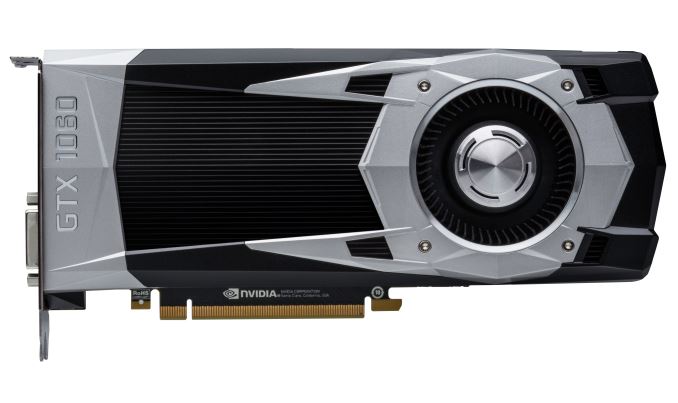
Excitingly, GPU Season 2016 is now in full swing. In the last two months we have seen NVIDIA launch a pair of high-end cards – the Pascal-based GeForce GTX 1080 and GTX 1070 – and just last week rival AMD launched their first card based on their Polaris architecture, the mainstream-focused Radeon RX 480. Powered by TSMC’s 16nm FinFET process and GlobalFoundries’ 14nm FinFET process respectively, NVIDIA and AMD have delivered better performance for lower prices, and with lower power consumption as well.
Of course no GPU product stack is complete with just a single chip and a handful of cards, and over the coming months we are going to see both vendors rolling out the rest of their respective stacks. To that end, kicking off this second wave of updates today is NVIDIA, who in traditional top-to-bottom fashion is announcing the next card in their product stack, GeForce GTX 1060. Powered by the company’s new GP106 GPU, GTX 1060 will be NVIDIA’s play at the mainstream/enthusiast market.
| NVIDIA GPU Specification Comparison | ||||||
| GTX 1080 | GTX 1070 | GTX 1060 | GTX 960 | |||
| CUDA Cores | 2560 | 1920 | 1280 | 1024 | ||
| Texture Units | 160 | 120 | 80 | 64 | ||
| ROPs | 64 | 64 | 48? | 32 | ||
| Core Clock | 1607MHz | 1506MHz | ? | 1126MHz | ||
| Boost Clock | 1733MHz | 1683MHz | 1700MHz | 1178MHz | ||
| TFLOPs (FMA) | 8.9 TFLOPs | 6.5 TFLOPs | 4.4 TFLOPs | 2.4 TFLOPs | ||
| Memory Clock | 10Gbps GDDR5X | 8Gbps GDDR5 | 8Gbps GDDR5 | 7Gbps GDDR5 | ||
| Memory Bus Width | 256-bit | 256-bit | 192-bit | 128-bit | ||
| VRAM | 8GB | 8GB | 6GB | 2GB | ||
| FP64 | 1/32 | 1/32 | 1/32? | 1/32 | ||
| TDP | 180W | 150W | 120W | 120W | ||
| GPU | GP104 | GP104 | GP106 | GM204 | ||
| Transistor Count | 7.2B | 7.2B | ? | 2.94B | ||
| Manufacturing Process | TSMC 16nm | TSMC 16nm | TSMC 16nm | TSMC 28nm | ||
| Launch Date | 05/27/2016 | 06/10/2016 | 07/19/2016 | 01/22/2015 | ||
| Launch Price | MSRP: $599 Founders $699 |
MSRP: $379 Founders $449 |
MSRP: $249 Founders $299 |
$199 | ||
When it came to building the Maxwell 2 generation, NVIDIA designed GM206 as half of a GM204; half of the CUDA Cores, half of the ROPs, half of the memory bandwidth, etc. It allowed for a very straightforward progression from the bottom of the Maxwell 2 family to the top of it, maintaining the same resource balance between all of the GPUs. For the Pascal generation in turn, NVIDIA has done much the same here.
Diving into the specifications then, GTX 1060 and its GP106 GPU ships with 1280 CUDA cores, which is half the number found on GTX 1080/GP104. Similarly, this means we’re looking at half the texture units, and half of the polymorph geometry engines. At this point NVIDIA has not provided an architecture diagram for GP106, so I don’t know how NVIDIA has laid out the internal working of the card, but we’ll be looking at 10 Pascal SMs in some configuration.
However on the backend of the rendering pipeline, things are a bit more interesting NVIDIA deviates a bit from tradition, and a bit from making GP106 a true halving of GP104. Whereas you’d expect half of a GP104 to ship with a 128-bit memory bus, NVIDIA has defied expectations by giving GP106 a larger 192-bit memory bus, giving the chip 50% more memory bandwidth per CUDA core, all things held equal. NVIDIA’s no stranger to 192-bit memory buses – in fact GK106 had one – but after Maxwell, this comes as a bit of a surprise.
As this is only a brief introduction on NVIDIA’s part – little more than a teaser – I’m sure we’ll find out more about their architectural decisions in time for the full review, but I suspect that the larger bus is a compromise solution for coming up with more memory bandwidth versus GTX 960/GM206. Relative to their Maxwell predecessors, all of the other Pascal parts so far have received significant bandwidth increases in order to feed their faster GPUs. For GTX 1080 this was GDDR5X, and for GTX 1070 this was faster 8 Gbps GDDR5 combined with a unified 256-bit memory bus. For GP106 to follow this path, NVIDIA would need to either implement GDDR5X (a more costly and volume-limited technology at this time), or go with a wider memory bus, and the company has seemingly opted for the latter.
| NVIDIA Compute To Memory Bandwidth Ratios | |||||
| Video Card | FLOPs-per-byte | Total Memory Bandwidth | |||
| GTX 1080 | 25.8 | 320GB/sec | |||
| GTX 1070 | 23.5 | 256GB/sec | |||
| GTX 1060 | 21.1 | 192GB/sec | |||
| GTX 960 | 20 | 112GB/sec | |||
| GTX 660 | 12.8 | 144GB/sec | |||
In any case, the 192-bit memory bus also means that we may see an increase in the number of ROPs on the card. NVIDIA has not disclosed the ROP count, but Pascal’s internal ROP/L2/memory controller partition design means that we’re going to be looking at 6 partitions, which at 8 ROPs per would work out to 48 ROPs. If this is the case, then not only would GTX 1060 be receiving a significant boost in memory bandwidth versus its predecessor, but it would be receiving a significant increase in raw pixel throughput as well. So it will be interesting to see what the final specifications turn out to be. Note that this could also impact the raster engine count – to maintain perfect balance, Pascal needs a raster engine for every 16 ROPs – but at this point that’s a bit more conjectural.
Moving on to clockspeeds, the GTX 1060 will be shipping with a 1.7GHz boost clock, which is smack-dab in the middle of the boost clocks for the GTX 1080 and GTX 1070. In other words, the card will be clocked just as high as its higher-end siblings, and the only difference will be the overall number of processing units within the GPU. On a pure SM basis this puts GTX 1060 at 4.35 TFLOPs, giving the card 67% of the compute and geometry performance of the GTX 1070. Or to compare it to the outgoing GTX 960, we’re looking at an 80% increase in those same metrics.
Backing the GP106 GPU is the aforementioned GDDR5 memory. Owing to its non-power-of-two memory bus size, GTX 1060 will be shipping with 6GB of VRAM, which is 2GB less than the GP104 cards and 2-4GB more than the older GTX 960. The card will use the same 8Gbps memory as on GTX 1070, giving the card 192GB/sec of total memory bandwidth, a hefty 71% increase over GTX 960. Combined with the increased memory compression efficiency of Pascal, it goes without saying that GTX 1060 should not find itself wanting for memory bandwidth.
Rounding out the package, let’s talk about power and thermals. NVIDIA is slotting GTX 1060 in the same TDP envelope as the outgoing GTX 960, which means 120W, making the GTX 1060 their flagship sub-150W card. We’ll of course see just how well they adhere to that in our full review, but the basic idea is that GTX 1060 should be a drop-in replacement for GTX 960, an important consideration for the sub-150W market that the card is aimed at.
In terms of performance, NVIDIA hasn’t published any internal benchmarks, but they have been rather explicit that they’re targeting GTX 980 performance. Given what we’ve seen of Pascal so far, there’s good reason to believe that a 1280 CUDA core GPU should be able to come close, though it’s going to depend on the game. My best guess is that baring more extensive power throttling, GTX 1060 should be able to come close, though less so in games that are very shader/texture heavy. In any case, coupled with NVIDIA’s 120W TDP power target, what we’re looking at is another aggressive move by NVIDIA with regards to power efficiency, bringing GTX 980 performance down from 165W to 120W.
For the July 19th launch, much like their higher end cards NVIDIA is going to be launching with two designs and two price points. Officially the GTX 1060 starts at $249; this will be for partner custom cards, and I expect this will be for the usual single/dual fan open air cooler designs that we saw with the GTX 960. Meanwhile at $299 NVIDIA is launching a Founders Edition card, which implements a full blower.
However this is where the similarities end. Unlike the GTX 1080/1070 launch, the 19th is a hard launch for both the GTX 1060FE and for partner custom cards, and NVIDIA is expecting the bulk of the cards sold to be these custom cards. In this sense the GTX 1060 launch is more akin to the GTX 960 launch, as NVIDIA has more often than not opted to pass on producing reference cards for their mainstream cards.
In fact NVIDIA’s partners won’t even be selling the GTX 1060FE; the card will only be available through NVIDIA’s website. NVIDIA is calling the GTX 1060FE a “special limited edition” card, and though the company isn’t commenting on the matter, I strongly suspect that the GTX 1060FE is a limited run that NVIDIA will only be selling for a couple of months or so. NVIDIA has done similar things in the past, though ultimately when they curtail production is entirely up to them. I do wonder how NVIDIA’s partners feel about the company competing with them in the etail market, but with NVIDIA charging a significant $50/20% price premium, the partners have a lot of room to play with and improve on the NVIDIA reference design.
In terms of design, the GTX 1060 Founders Edition unsparingly ends up being a slightly smaller version of the common design shared by the GTX 1080 and GTX 1070 Founders Edition cards. The full care measures 9.75-inches long, 0.75-inches shorter than the GTX 1080/1070. Of that, only 6.75-inches is the actual reference PCB, with the final 3-inches housing the sole 6-pin power connector, the rest of the heatsink, and the radial blower fan. Given the size of the PCB, I wouldn’t be surprised to see some fairly small semi-custom cards come out of the partners, pairing up the PCB with smaller coolers. Meanwhile the display I/O configuration is identical to the other Pascal cards at 3 DP 1.4 ports, 1 HDMI 2.0b port, and 1 DL-DVI-D port. Also, the SLI connector is absent from this board.
Finally, looking at the larger competitive and pricing landscape, the GTX 1060 is consistently priced with NVIDIA’s other Pascal cards, which is to say higher than the 900 series. Overall, GTX 1000 series pricing is closer to that of the 700 series, with the GTX 1060 launching at the same $249 price point the GTX 760 launched at back in 2013. As a result NVIDIA is going to miss the $199 mainstream sweet spot that the GTX 960 launched at, at least for the time being.
Whether that’s a blessing or not for AMD however remains to be seen. Overall GTX 1060 is clearly a shot across the bow at AMD’s recently launched Radeon RX 480, not quite overlapping it in price but otherwise going after the same target market with very aggressive performance and power targets. For various reasons 4GB RX 480 cards are in extremely short supply, and if this is still the case in 2 weeks, then the practical competition would be the $239 RX 480 versus the $249 GTX 1060 until AMD’s partners further ramp up the 4GB cards. Even then, I don’t know if things are cut and dry for the 4GB card given its more limited memory capacity.
Speaking of short supply though, it remains to be seen whether NVIDIA can keep the GTX 1060 in supply over the next couple of months. Certainly the first batches of cards will sell out on the 19th, as this has happened with previous launches. But what’s in question is whether NVIDIA and their partners can keep them in supply with the batches after that. So far NVIDIA has not been able to keep the GTX 1080 and GTX 1070 in supply – at the time of this writing, Newegg has a single card in stock – and the launch of the GTX 1060 won’t help that.
In practice NVIDIA has been receiving/processing GP106 for months, so the formal launch of GTX 1060 doesn’t change anything, but it none the less hints that NVIDIA is struggling at some point in their supply chain to meet demand. Officially the company has stated that they expect broad availability for the card and that they are ramping up supply “really fast,” but it’s definitely a case of where we’re going to have to wait and see. Ultimately buyers after the GTX 1060 may be better served snagging it on launch day, where the greatest number of units are available at once.


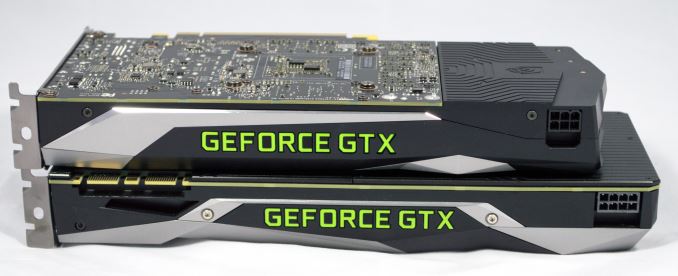
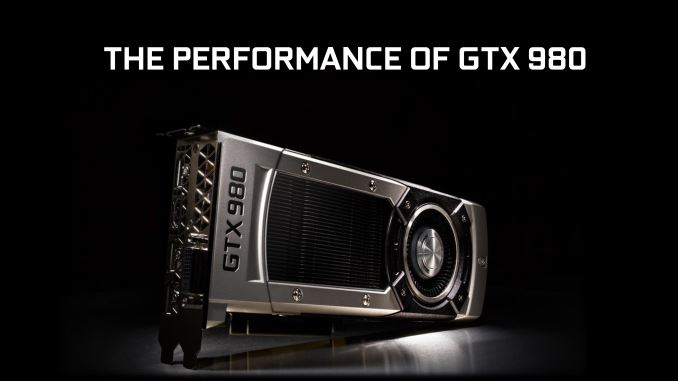
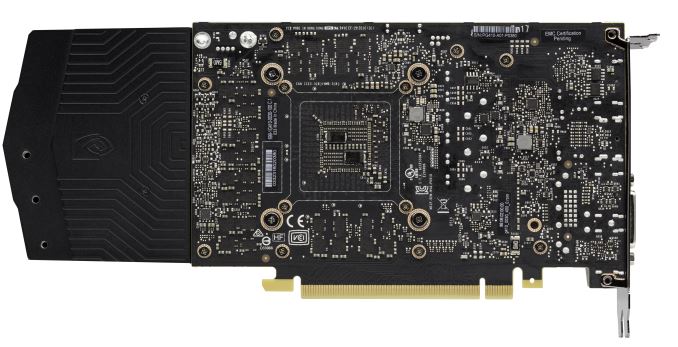
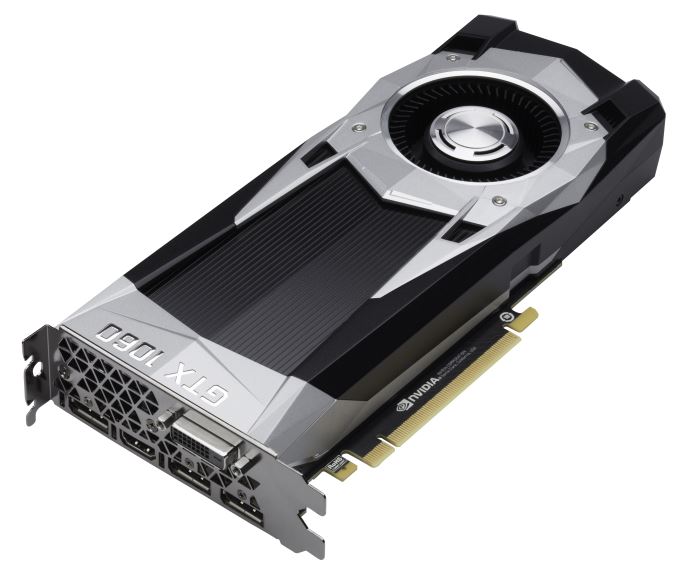














228 Comments
View All Comments
R0H1T - Thursday, July 7, 2016 - link
At this point in time, I'm fairly certain there were a few that launched at or near that price point, the gouging is all retailers fault IMO. As for the current situation, after unlocking extra VRAM was revealed, it's clear that the retailers don't want to sell 8GB cards, 4GB officially, anywhere close to 200$ so the artificial scarcity & gouging is again not AMD's fault.For the latter part, I'd say that the actual sales of 1060 will determine whether AMD has to lower their price point; however I doubt they'd be forced in doing so anytime before the end of the year.
versesuvius - Thursday, July 7, 2016 - link
Whatever the performance of this card is which is certainly going to be within + or - %5 of RX 480, with a TDP of 120 watts as compared to 150 for RX 480, one thing is also certain which is that AMD is not going to have the $200 VGA card market to itself for any period of time. That was the high point of AMD marketing strategy which while it clearly was aimed at hiding the fact that their Vega is six months behind 1080 even assuming that Vega is any match for 1080, still had some flare to it. So, this opportunity is blown away as usual.There are things that AMD can do (which AMD being AMD is certainly not going to do). Regardless, AMD can lower the prices of RX480 by 10% immediately. AMD can rush out the RX 480 x 2 at $350 (armed with their new driver! :) ), which is going to put a serious dent in the sales of 1080 and 1070. Given AMD's claims that some lower power draw cannot decrease the performance of RX 480, that card should be able to operate around a TDP of 200 watts which would be very good for its price and performance.
FMinus - Thursday, July 7, 2016 - link
the things that AMD should do, is take care of all their market not just a segment one, regardless if this segment is 80% of total. Frankly I'm happy for them if they rake in cash with the RX 400 series, but as a consumer, I'm pretty pissed that I'll have to wait another half a year to get a high-end card.And since I'm not a share holder, this move by AMD to completely ignore their high end customers for this long, makes me quite angry.
Audiophizile - Saturday, July 9, 2016 - link
Agreed. I want competition in the market I belong to. That market is currently and will be controlled by nvidia for 6+ months. Sad times to like nice stuff.tipoo - Thursday, July 7, 2016 - link
SMS and SMP seem like real game changers for VR, I'm shocked Polaris doesn't seem to have an answer to them.fanofanand - Thursday, July 7, 2016 - link
Considering nobody has experienced SMS and SMP, it's quite bold for you to consider them game changers with nothing similar or exclusive from AMD.DrKlahn - Thursday, July 7, 2016 - link
Let's look at things realistically. The AIB cards in the 1070/1080 cards have not been significantly cheaper than the FE cards (or cheaper period). I don't see that changing for the 1060. The 480 has not had any cases of killing a motherboard that I have found and we're talking about a ~40-50w difference vs. 1060. That won't be noticed on the electric bill nor will it result in a huge amount of heat comparatively. I'm guessing availability for the 1060 will be low considering that their higher margin parts still aren't able to meet demand. No way will a much lower margin part get wafer allocation over these. The rumors of it being a salvage part may solve that, but that would make it a costly long term mainstream proposition.Performance wise I expect them to trade blows. The AIB 480's with better power delivery and cooling may give that card a bit more headroom. But reference vs. FE I do expect them to be in the same ballpark. But I think the 1060 FE will be in short supply and likely be above MSRP for some time. The rushed launch just smacks of Nvidia's normal tactic of trying to rain on the competitors parade. It will probably keep the faithful mashing F5 trying to find one, but anyone even slightly impartial will probably still grab the less expensive and available 480.
cocochanel - Thursday, July 7, 2016 - link
Finally, an intelligent comment !eddman - Thursday, July 7, 2016 - link
Do not presume to know what every single buyer thinks.I, personally, do like to have a less power consuming card in my computer. I have an old mainboard and I'd rather not put extra, non-standard pressure on it (although a custom 480 with two 6-pin connectors would solve this issue). Also, I have no air conditioning in my house, so a card with less wattage is preferable to me.
I have no interest in the 4GB version of 480. The 8GB version is $240, just $10 below 1060. Obviously no 1060 can be bought for that amount for a while, but I can wait. 6GB will be more than enough at 1920x1080 for quite a while for me.
Writing all that, the main factor would still be performance and we have no numbers yet, so there is no point in passing judgment yet.
DrKlahn - Thursday, July 7, 2016 - link
The founders edition, which is what will ship initially, is $60 more. And judging by the current market, there's really no compelling evidence to suggest the 1060 will see AIB be significantly cheaper. Nvidia gave the same forecast with their current chips and it has yet to be anywhere close to reality.There have been no cases of any motherboard damage and the 480 seems to be selling quite well. So if this was really an issue, we would start seeing reports. It would obviously be better if it was closer to the specs, but even the Tom's followup conclusion is that in reality it isn't likely to be an issue.
The wattage delta will cause the room to heat up more, that's physics. Realistically with any sort of airflow it won't be a drastic difference. We're talking a couple low wattage bulbs worth of heat.
Not passing any judgement performance wise. The 1060 could dominate the 480. But from what I'm seeing I don't expect that to happen. But that's simply my speculation. I do agree that performance will weigh heavily on which product shifts price point and volume sold.